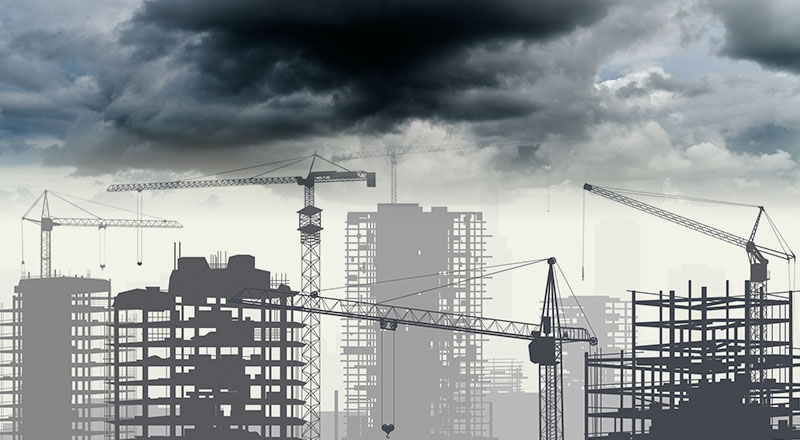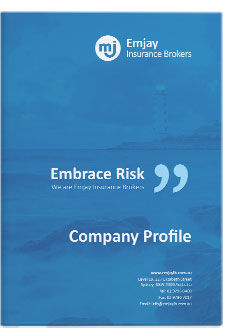Poor quality structures built during the construction boom and the costs of replacing dangerous cladding are driving professional indemnity insurance premiums to unsustainable levels.
Australia’s construction industry is in crisis.
Recent years have seen apartment buildings popping up across our major cities at record speed. But, with contractors under pressure to meet increasingly tight deadlines, corners have been cut and compromises made like never before.
Property defects on the more severe end of the scale have become increasingly pronounced. Think Sydney’s Opal Tower and Melbourne’s Lacrosse building. The highly-publicised nature of these incidents is alerting owners across the country to potential problems with the properties into which they’ve invested their hard-earned cash. And building industry professionals are also feeling the impact.
The end result? Property owners are facing multi-million dollar defect remediation bills, and professional indemnity insurance premiums for building and construction professionals have gone through the roof.
How did it come to this?
Flammable cladding catastrophe
In June 2017, as the world watched on in horror, London’s Grenfell Tower was consumed by flames. What started as a small fire in one of the building’s 120 apartments, quickly leapt from floor to floor before engulfing the entire 24-storey building at terrifying speed, resulting in 70 deaths and countless injuries. The cause? Aluminium cladding with a highly-flammable core that covered the outside of the building.
Grenfell Tower isn’t the first building to suffer the effects of substandard cladding, and it won’t be the last. Flammable cladding has been blamed for serious high-rise fires over the last ten years in the United States, France, the Middle East and Asia.
Closer to home, in November 2014 a small fire started on a lower-level balcony of Melbourne’s Lacrosse Apartment Tower, quickly racing up 13 floors in less than 10 minutes. The speed of the ascent was, in part, because of the combustible cladding on the outside of the building.
These incidents kicked authorities into action and cladding reforms have now been implemented across Australia. At the same time, unit owners and builders are facing multi-million dollar costs for remediation works.
But the effects of combustible cladding don’t stop there.
Property defects disaster
The quality of construction of residential developments in New South Wales was thrust into the spotlight following the discovery of major defects in the newly opened Opal Tower apartment block in Sydney’s Olympic Park.
On Christmas Eve 2018, while most of us were preparing for family celebrations, almost 3000 residents were evacuated from their apartments after hearing loud “cracking noises”, which sparked fears that the 36-storey apartment block would collapse. It was later found that parts of the structure had been constructed using lower strength concrete and under-designed critical support beams, which failed under extreme load.
The Opal Tower fiasco has since proven to be the tip of the iceberg in terms of serious quality and compliance issues faced by the construction industry in New South Wales.
In June 2019, residents of the 132-apartment Mascot Towers in Sydney’s Inner South were forced to leave their homes when their 10-storey building was evacuated after cracking was discovered in several beams. The race continues to stabilise the building and owners face astronomical costs for defect remediation work.
While the Opal and Mascot Towers are perhaps two of the most severe examples, less serious property defects requiring remediation are the norm in the vast majority of new apartment buildings.
Insurance impact
The fallout has been devastating. Combustible cladding and property defects have fuelled a crisis of confidence in construction that’s threatening to bring the industry to a halt.
Aside from the obvious impact on property owners and strata schemes, building industry professionals are facing a watershed moment as their insurance premiums spiral out of control – if insurance is, indeed, available at all.
Consider building surveyors, for example, who are responsible for signing off on buildings (including building permits and occupancy certificates).
To be a registered surveyor in Queensland, New South Wales and Victoria, professionals are required to maintain professional indemnity insurance without exemptions of any kind. But most Insurers are no longer offering this, with cladding exclusions the norm. Many surveyors simply can’t obtain insurance, while others are reporting that the cost of their premiums has more than quadrupled.
The impact? Surveyors not able to obtain compliant insurance are unable to meet the registration requirements, leaving projects without building permits and occupancy certificates, unable to achieve practical completion.
And this is only one example of the wider fallout.
Insurers not to blame
It’s all too easy to point the finger of blame at insurance companies when things go wrong and say they’re not meeting consumer and market needs. But this is unfair.
Self-regulation in the building industry has clearly failed, and insurers now expected to pick up the tab are unwilling to do so.
Insurers have been the catalyst for the initiation of past government inquiries into the building and construction industries, and it’s time for the government to take action once again.
Industry reform, driven by political intervention, is needed to address the problem.
But it will take time.
So what’s to be done in the meantime?
Ask for advice
Now, more than ever before, professionals working in the building and construction industry need to ensure they understand the myriad of risks they’re facing and know what their options are when it comes to insuring against them.
That’s why professional advice from a broker, who understands your business and the risks facing the industry you work in, is essential.
For building and construction professionals, advice is best sought before construction contracts are entered into.
At Emjay Insurance Brokers, we understand the risks you are facing. We’ll work closely with you to craft a tailored insurance solution to meet your needs and will empower you to embrace risk.
Contact us today to discuss your needs on (02) 9796 0400.





